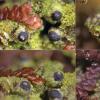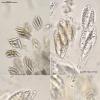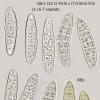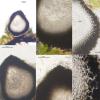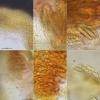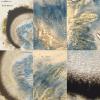
22-09-2021 19:15
 Edvin Johannesen
Edvin Johannesen
Apothecia 1-1,5 mm in diam., "Ascocoryne-like", to

20-09-2021 17:29
 Zuzana Sochorová (Egertová)
Zuzana Sochorová (Egertová)
Hello,This Orbilia measures up to 2 mm in diameter

22-09-2021 11:10
 Andgelo Mombert
Andgelo Mombert
Bonjour à tous, Sur tronc de Acer pseudoplatanus

22-09-2021 14:50
Thomas Læssøehttps://svampe.databasen.org/observations/10211828

21-09-2021 11:55
Thomas Læssøehttps://svampe.databasen.org/observations/10206869

20-09-2021 16:36
Jennifer FiorentinoFrom feedback I received in other fora the species

20-09-2021 11:49
 Viktorie Halasu
Viktorie Halasu
Hello,is this still Ascobolus michaudii? The ornam
Ascolichen or lichenicolous fungus?
Enrique Rubio,
07-02-2025 20:25
Ascomata pheritecioid, KOH-negative, flask-shaped, black, melanized, ostiolate and up to 0.5 mm high, semi-inmersed o a thick layer of green algae over old thalli of a Frullania species on hardwood. The hymenium is hemiamyloid, reddish in IKI, deep blue after KOH-pret. Periphyses numerous, pseudoparaphyses or paraphyses not seen. I think the asci are not bitunicate, but I can't say for sure. The ascospores are hyaline, very pale yellowish brown at maturity, (3-)6-7 transversaly septate and smooth.
I really can't tell whether it is an ascolichen or a lichenicolous ascomycete. Would any of you have any ideas that could help me?
Paul Diederich,
07-02-2025 21:09

Re : Ascolichen or lichenicolous fungus?
This is a lichen, not a lichenicolous fungus. It strongly resembles species of Agonimia, but in that genus, ascospores are always (sub-)muriform.
Zdenek Palice,
07-02-2025 23:51
Re : Ascolichen or lichenicolous fungus?
Hallo, I agree that it is a lichen. In my opinion it could be a richly fertile specimen of Normandina chlorococca (Leighton) Orange, recently segregated from N. acroglypta by the late Alan Orange in Lichenologist 54 (2022). Both N. acroglypta and N. chlorococca are often associated with Frullania liverworts, and both species may even grow together on 'mossy' ultramafic (serpentinic) rocks. The epiphytic/epixylic stuff usually refers to N. chlorococca, which is normally sorediate sterile crust and only rarely fertile. The two species are reliably separated by chemistry, different terpenoids.
Enrique Rubio,
08-02-2025 00:32
Re : Ascolichen or lichenicolous fungus?
Thank you Paul and Zdenek.
It matches perfectly with Normandina chlorococca!
It matches perfectly with Normandina chlorococca!
Alain GARDIENNET,
08-02-2025 08:40
Re : Ascolichen or lichenicolous fungus?
Hi friends,
Zdenek, I would be interested by Orange's paper because I met N. acroglypta in my fields.
Best wishes,
Alain (agardiennet@gmail.com)
Zdenek, I would be interested by Orange's paper because I met N. acroglypta in my fields.
Best wishes,
Alain (agardiennet@gmail.com)

